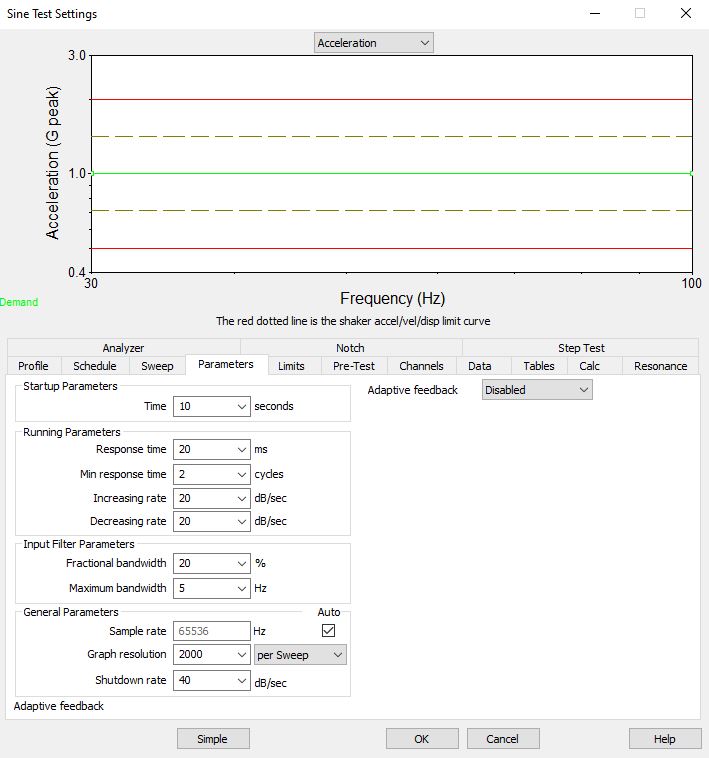An aircraft manufacturer ran a high cycle fatigue (HCF) test on a unit clamped to a fixture. The test began oscillating after the resonance peak, which the customer sought to address.
An HCF test applies cyclical stress at a high rate to cause elastic deformation or crack initiation. Engineers run this qualification test on components like turbine blades to simulate their operational environment.
SRTD Control
Engineers can control HCF tests using sine resonance, track, and dwell (SRTD). The customer’s HCF test consisted of a sine sweep to identify resonances followed by a sine-tracked dwell. They ran two tests at different acceleration levels. The transmissibility was high (in the ten-thousands) for both dwells. Additionally, the test began oscillating after the resonance peak during the lower acceleration (g) test.
Sometimes, oscillations can be the product of the control response time. Resonance can take time to respond to a stimulus. If the control is faster than the resonance can change, oscillations can occur.
In this case, the customer adjusted the input filter parameters and running parameters but was not able to improve the results. In other instances, the engineer may not have the option to adjust the response time due to test constraints.
 Adaptive Feedback
Adaptive Feedback
The adaptive feedback setting in the VibrationVIEW Sine software prompts the system to adaptively adjust the control loop. It allows for tighter control outside of resonance while ensuring stability at the resonance. As the test sweeps through the resonance and begins to oscillate, the software will automatically adjust the response time and slew rate to more appropriate settings.
Featured Software
